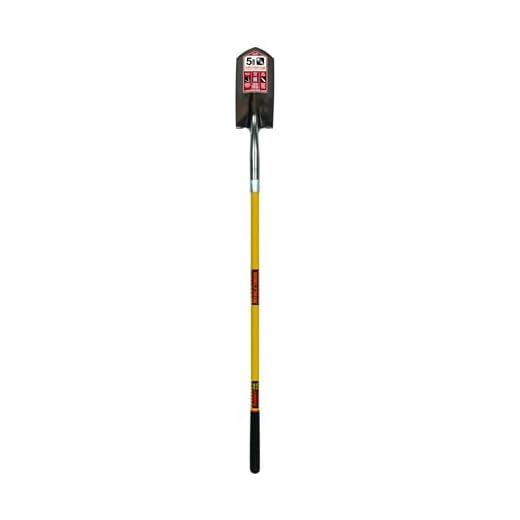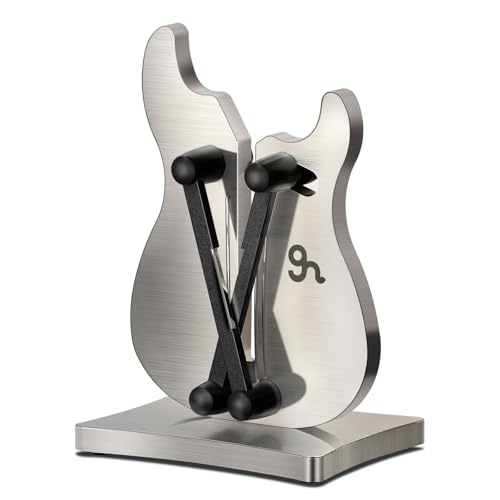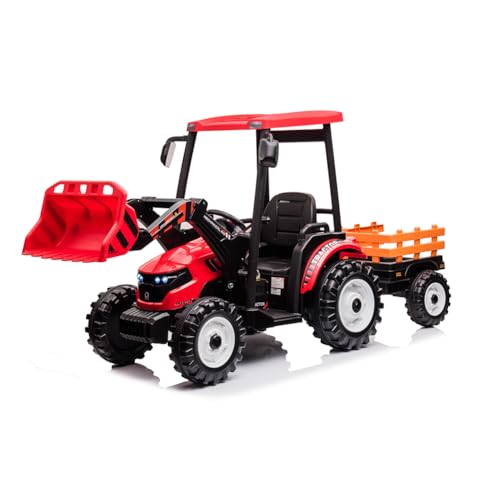




When it comes to shovels, there are various types and sizes available for different purposes. One such type of shovel is a long and narrow shovel that serves a specific function. These shovels are commonly referred to as trenching shovels or trenching spades.
Trenching shovels are designed with a long and slim blade, which allows for easy digging in tight spaces or narrow trenches. The blade typically has a pointed tip at the end, allowing for precise and controlled digging. The long handle of the shovel provides leverage and makes it easier to lift and move soil or debris.
These shovels are commonly used in construction and landscaping projects, where digging trenches or ditches is required. They are also used for tasks such as installing irrigation systems, laying cables or pipes, or creating pathways. The narrow design of the shovel allows for efficient digging without disturbing the surrounding area.
So, if you ever come across a long and narrow shovel during your gardening or DIY projects, remember that it is called a trenching shovel or trenching spade. Its unique design and functionality make it a valuable tool for various digging tasks in confined spaces.
Definition of a Long Narrow Shovel
A long narrow shovel, also known as a trenching shovel or a transplanting shovel, is a specialized tool designed for digging narrow and deep holes. It features a long, slender blade that allows for precise digging in tight spaces.
The blade of a long narrow shovel is typically made of durable materials such as hardened steel or fiberglass reinforced plastic. This ensures that the shovel can withstand the force applied during digging, especially in tough soil conditions.
The narrow blade of the shovel enables it to penetrate the ground with minimal effort. This makes it particularly useful for tasks such as digging trenches, transplanting plants, and creating narrow channels or furrows in the soil.
In addition to its narrow blade, the long narrow shovel often has a long handle to provide leverage and reach. This allows the user to dig deep holes without having to bend over excessively or strain their back.
The long narrow shovel is commonly used in gardening, landscaping, and construction work. Its design makes it well-suited for tasks that require precision and maneuverability in narrow spaces.
| Advantages | Disadvantages |
|---|---|
| – Ideal for digging narrow trenches | – Not suitable for heavy-duty digging |
| – Allows for precise digging in tight spaces | – Limited surface area for moving larger quantities of soil |
| – Provides leverage and reach |
Overall, the long narrow shovel is a versatile tool that is essential for many digging tasks that require accuracy and maneuverability in confined areas. Its unique design and specialized features make it a valuable asset for gardeners, landscapers, and construction workers alike.
Learn about the tool with a long handle and a narrow blade
When it comes to gardening or working in the yard, having the right tools is essential. One such tool that is commonly used is a long narrow shovel. This type of shovel is designed with a long handle and a narrow blade, making it perfect for certain tasks.
One of the main uses of a long narrow shovel is for digging trenches or ditches. The narrow blade is ideal for cutting through the soil and creating a straight, even trench. Whether you’re installing irrigation pipes or burying cables, a long narrow shovel can make the job much easier and more efficient.
Another common use for a long narrow shovel is for transplanting small or delicate plants. The narrow blade allows for precise digging, making it easier to remove plants without damaging their root systems. This can be especially helpful when moving flowers, herbs, or other small plants from one location to another.
In addition to these specific uses, a long narrow shovel can also be used for general digging and soil loosening tasks. The long handle provides leverage, making it easier to penetrate the soil and break it up. This can be useful when preparing a garden bed or clearing out rocks and roots from a specific area.
Overall, a long narrow shovel is a versatile tool that can be used for a variety of tasks. Whether you’re digging trenches, transplanting plants, or simply loosening soil, this tool is a valuable asset to any gardener or homeowner. So, next time you’re working in the yard, consider adding a long narrow shovel to your toolbox!
Uses of a Long Narrow Shovel
A long narrow shovel, also known as a trenching shovel or a drain shovel, is a versatile tool that can be used for various tasks. Its unique design makes it ideal for specific jobs that require precision and efficiency.
Here are some common uses of a long narrow shovel:
- Trenching: As the name suggests, trenching shovels are specifically designed for digging narrow trenches. They can be used in construction projects, gardening, or any other situation that requires digging long, straight channels in the ground.
- Drainage work: The narrow shape of this type of shovel makes it suitable for working in tight spaces, such as installing or repairing drainage systems. Whether you need to dig a small hole to install a drainpipe or clear a blocked drain, a long narrow shovel can help you complete the task efficiently.
- Gardening: Long narrow shovels are commonly used in gardening for tasks such as digging trenches for irrigation pipes, planting small trees or shrubs, and transplanting delicate plants. The narrow blade allows for more control and precision when working in confined spaces.
- Snow removal: In areas with heavy snowfall, a long narrow shovel can be used to clear narrow paths and walkways. The narrow blade can easily cut through the packed snow, allowing for efficient snow removal without damaging the surrounding surfaces.
- Excavation: Long narrow shovels are also useful for excavation tasks such as digging small holes or removing loose soil. The slim design makes it easier to maneuver the shovel in tight spaces, making it ideal for jobs that require precision and accuracy.
Overall, a long narrow shovel is a valuable tool for anyone working in construction, gardening, or landscaping. Its unique design allows for greater control and precision in various tasks, making it an essential tool to have in your arsenal.
Discover the practical applications of this tool
The long narrow shovel, often referred to as a drain or trench shovel, is an essential tool that serves a variety of practical applications. Its unique design and features make it an ideal tool for specific tasks that require precision and efficiency.
1. Digging trenches: The primary use of the long narrow shovel is for digging trenches. Its long and narrow blade allows for easy and precise digging, making it perfect for creating narrow channels and ditches. Whether you need to install underground cables, pipes, or irrigation systems, this tool will make the task faster and more straightforward.
2. Clearing drains: The narrow blade of the shovel is also excellent for clearing drains and gutters. Its shape allows it to fit into tight spaces and remove debris effectively. Whether it’s leaves, mud, or other obstructions, this tool will help you maintain efficient drainage systems and prevent potential flooding or water damage.
3. Gardening and landscaping: The long narrow shovel is a versatile tool for gardening and landscaping projects. It is ideal for digging narrow holes for planting, transplanting small plants, or creating precise borders and edges. Its narrow blade allows for more control and accuracy, making it an indispensable tool for any green thumb.
4. Snow removal: During the winter months, the long narrow shovel can also be used for snow removal. Its narrow blade can effectively cut through snow and ice, allowing you to clear pathways and sidewalks with ease. This tool is especially handy for areas with limited space or tight corners where a larger shovel might be impractical.
5. Construction and maintenance: The long narrow shovel is commonly used in various construction and maintenance tasks. Whether it’s mixing and moving materials in tight spaces or cleaning up debris, this tool is a reliable companion for professionals and DIY enthusiasts alike.
Overall, the long narrow shovel is a versatile and practical tool with a range of applications. Its unique design allows for precise digging, making it an essential tool for any task that requires accuracy and efficiency. Whether you’re working in your garden, on a construction site, or clearing snow, this tool will undoubtedly prove to be an invaluable asset.
Types of Long Narrow Shovels
Long narrow shovels, also known as trenching shovels or drain spades, are designed for specific tasks that require digging narrow and deep holes. These shovels are commonly used in landscaping, construction, and gardening. There are several types of long narrow shovels available, each suited for different purposes.
1. Square Point Shovel
The square point shovel is a popular choice for digging straight-sided trenches or holes. It has a flat, squared-off blade, which allows for efficient digging in compacted or rocky soil. The flat blade also helps with vertical digging and lifting heavy loads, making it ideal for construction tasks.
2. Round Point Shovel
The round point shovel features a rounded, pointed blade that is perfect for breaking up soil, removing rocks or roots, and creating shallow trenches. Its curved shape allows for easy digging and scooping, making it a versatile tool for landscaping and gardening tasks.
Both square point and round point shovels come with long handles that provide leverage and reduce strain on the back. They are typically made of sturdy materials such as steel or fiberglass, ensuring durability and longevity.
| Shovel Type | Main Use | Features |
|---|---|---|
| Square Point Shovel | Digging straight-sided trenches or holes | Flat, squared-off blade for efficient digging in compacted or rocky soil |
| Round Point Shovel | Breaking up soil, removing rocks or roots, creating shallow trenches | Rounded, pointed blade for easy digging and scooping |
When choosing a long narrow shovel, consider the specific task you need it for and the type of soil you’ll be working with. The right shovel can make a significant difference in your efficiency and the overall outcome of your project.








